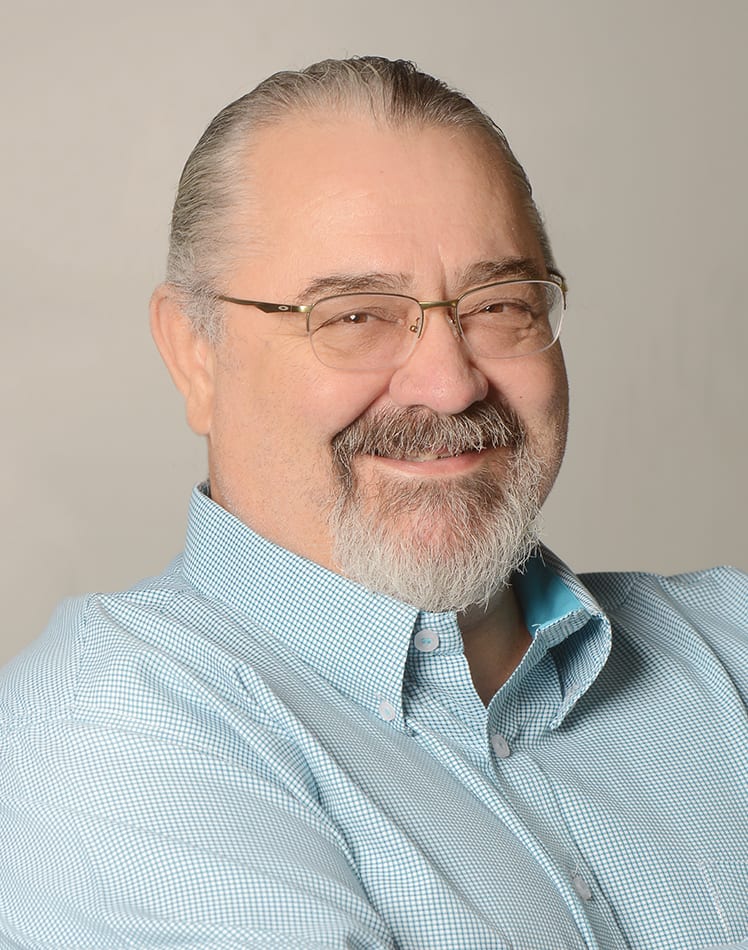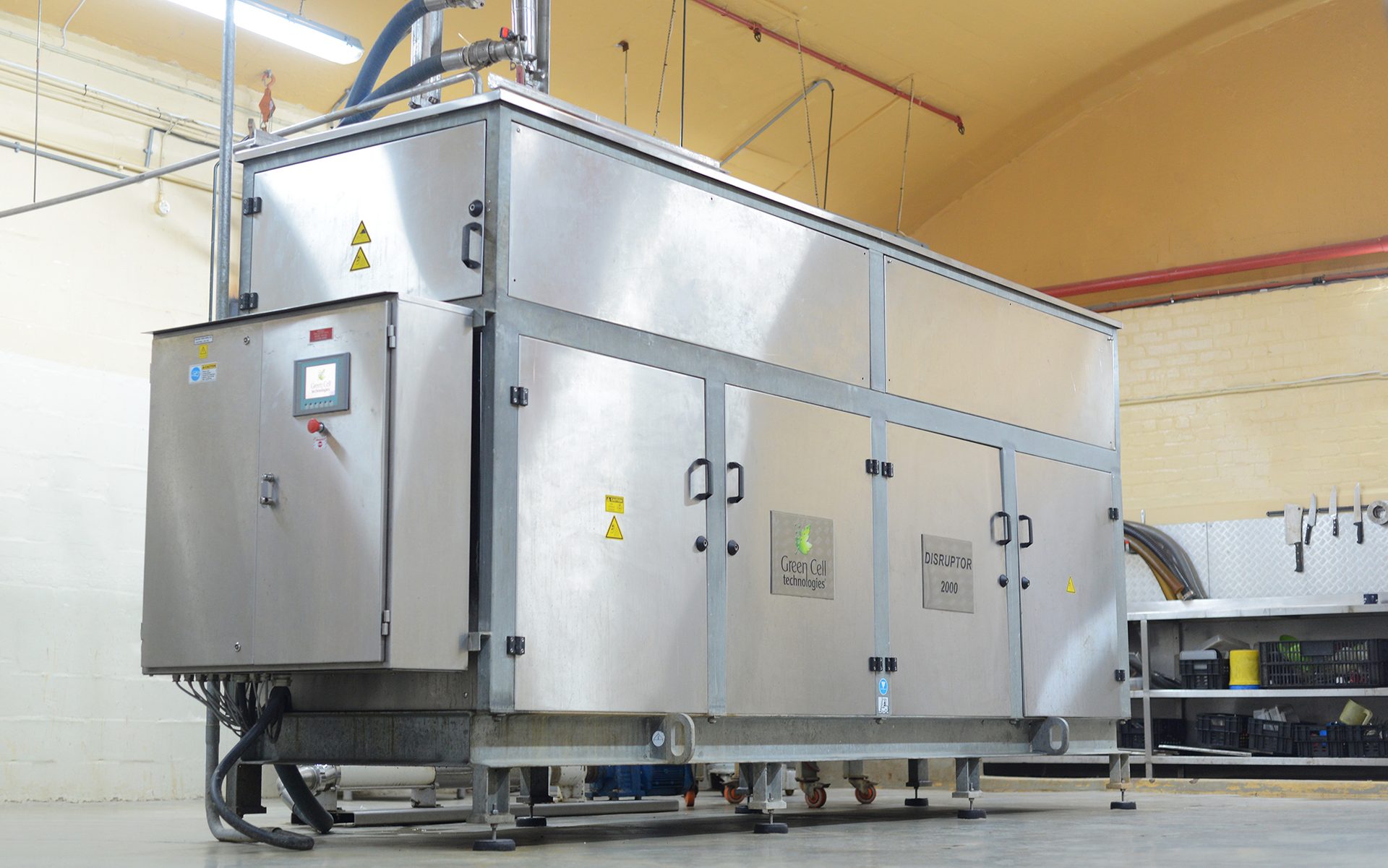JuLY 2023

Upcycling
Upcycling BSG Waste
to Produce Value-Added Byproducts
Valorizing through disruptive technology that’s faster than the speed of sound to create new income streams for manufacturers.
Green Cell Technologies (GCT) and RWH Holdings (RWH) have worked with several global brewers over a period of eight years to understand the challenges around what to do with their leftovers—brewers spent grain (BSG) and brewers spent yeast (BSY)—and the answer, as it would happen, is disrupt it.
About 39 million tons of BSG is produced annually worldwide. That is the same as approximately 3,900,000 waste removal trucks which, end-to-end, will wrap around Earth’s equator 6.8 times. BSG is the residual waste stream that remains after the brewing of beer. BSG is remarkably high in protein and fiber, has some residual energy and is a healthy food intake for human, animal and earth—if prepared correctly.
Unfortunately, BSG usually spoils within a day due to its high water, sugar and protein content.
This brief period makes BSG difficult to transport and process further into food or other human-grade products. Therefore, it is predominantly used in the feed sector as it is not readily available for human consumption. (Food Valley, 2022)
BY Roy Henderson, CEO, Green Cell Technologies & Jan Vlok, Research and Development Director, Green Cell Technologies
Green Cell Technologies (GCT) and RWH Holdings (RWH) have worked with several global brewers over a period of eight years to understand the challenges around what to do with their leftovers. All images courtesy of Green Cell Technologies
Jan Vlok is the research and development director of Green Cell Technologies

Roy Henderson is the CEO of Green Cell Technologies

Molecules found in the cellular structures of meat, fruit, vegetables, berries, nuts, grain, seeds etc. provide sustaining nutrition to achieve good health and wellbeing. Those molecules represent a comprehensive—across the spectrum—variety of all the macro and micronutrients necessary for human beings (including animals and earth) to flourish.
However, current food and beverage processing methods damage many of these “molecules of interest” and nullify their efficacy. With reduced nutrition in processing and a loss of fiber, there is a sense of satiety but not much nutritional or health benefit. Existing processing methods cannot easily and effectively process skins, seeds and grains (which contain significant nutritional or valuable properties) or radically reduce the fiber particle size to a level that will not upset the organoleptic sensibilities of the consumer.
Therefore, a conventional processor ends each day with not only a large pile of waste, which impacts the environment, but also an end product that is sold to consumers with a vastly reduced nutritional profile as compared to what it could be. Ironically, the “waste” represents the majority of the raw material molecules that are required for optimal nutrition. The “waste” also represents most of the fiber, which if ingested, would aid other nutritional and health benefits. Instead, consumers are mostly left fiber deficient.
Disrupting BSG
Disruptor technology was used in several trials, to deploy a non-chemical process (Dynamic Cellular Disruption or DCD) to open greater than 99% of all cell structures of the BSG “waste” mass. It’s important to note that DCD and Disruptor technology can be applied to any organic and some inorganic materials.
During the DCD process, other than pipe loss, which is the same volume irrespective of the production size, there is zero waste generated as the plant material can be used in its entirety.

DCD and Disruptor extract processing allows for particles to be reduced to sub-100 micron, microbially clean, increased available nutrition and bio-available—all in one step.
DCD also renders bio-available, all the molecules for the body to utilize, and ensures digestibility of the insoluble material(s). DCD does not manufacture molecules, but instead extracts what is available within the cell structure—more efficiently. This is from the source material and, therefore, outcomes are wholly reliant on the source material itself.
DCD also reduces the microbiological contaminants, yeasts and molds found in source materials—product that is passed through the Disruptor will show improved microbiological cleanliness.
In short, the DCD process and Disruptor technology increases available nutrition per serving and reduces particle size and waste, which has a positive impact in the consumer as well as the environment. The increased extraction of molecules signifies an increase in yield and nutrition, and with the utilization of what would normally be considered waste, has a positive economic impact on the processing value chain as well as environmental impact—circular economy.
Conventional vs DCD/Disruptor Technology Processing—BSG
Conventional manufacturing of BSG typically involves drying and milling into a powder. Analysis of the powder will show that the particle size remains big, which influences the taste of end products (comments of “cardboard” and “grittiness” are common).
Conventional drying and milling methods do not guarantee any increase in yield or nutrition, digestibility or microbial cleanliness.
DCD and Disruptor extract processing allows for particles to be reduced to sub-100 micron, microbially clean, increased available nutrition and bio-available—all in one step.
The resultant emulsion can be dried then milled into a very fine powder, complete with health benefits ready for further use in manufacturing if required.
This then opens possibilities of extended product lines and additional revenue generation for brewers.
BSG Testing Methodology
Demonstrating that DCD and Disruptor technology adds value to BSG manufacture, 200kg of BSG were processed. Material samples were taken for analysis pre and post DCD and sent for independent laboratory analysis.
1. University of Stellenbosch – pre and post DCD amino acid profile measurement.
2. SGS (SANAS accredited commercial lab) – pre and post DCD microbiological and heavy metal measurement.
3. Hearshaw and Kinnes (H&K) for pre and post DCD pesticide residue measurement.
Microbiological
The report found that there was a 1,600,000-fold decrease (99.999% improvement) in total plate count from 16000000 cfu/g to 10 cfu/g between the pre-DCD and post-DCD samples. The DCD process also reduced yeasts and molds to “not detected” from 16800 cfu/g and 28000 cfu/g, respectively.
Results
Phyto-Chemistry: Amino Acids (protein)
The report shows an average protein increase of 29%. This is clinically very significant if one considers that the barley or starch source used for beer manufacture before it became BSG, was subjected to substantial boiling to conduct extraction for the beer manufacturing process, of which much of the protein will have already been solubilized into the beer liquid. This is proven by the step that is required to minimize it to prevent cloudy beer.
Heavy Metals
The test measured for heavy metals typically examined for food and beverage production safety, those being mercury, cadmium, lead and arsenic. All results are <0.01 mg/kg where normal production (depending on source) will allow <3 mg/kg, <1 mg/kg, <0.1 mg/kg and <3 mg/kg, respectively. There is no difference from pre-DCD to post-DCD, proving that DCD and Disruptor technology do not increase the prevalence of heavy metals but rather significantly reduce them.
Pesticide Residue
Benzalkonium chloride at a residue rate of 5.5 mg/kg post-DCD and anomalous amount of piperonyl butoxide pre-DCD to post-DCD respectively were found in the test samples.
H&K also tested for approximately 250 other residual pesticide compounds, of which none were detected above their reporting limits, as can be seen from the lab reports (available on request).
Benzalkonium chloride is a compound found in SABS approved sanitizers, disinfectants and detergents that are mandated for use as per ISO 22000:2018 certification requirements to effectively achieve clean in place (CIP) in processing spaces. The material safety data sheets are available on request.
The lethal dose median (LD50) for benzalkonium chloride is 240 mg/kg, which would mean that a consumer would need to ingest 600 kg of the BSG in one sitting for there to be a 0.5 probability of any toxic effect. This is shown to be more improbable if one considers that the BSG flour will be diluted further as a part of a more complex ingredient final product.
Piperonyl butoxide is a very low toxic effect ingredient found in “pest control” products, but in this case was anomalous. Notwithstanding, in a fit for purpose facility this control would be better monitored and reduced.
This proves that DCD and Disruptor technology do not release or increase any additional pesticide residue and the post-DCD BSG is safe for human consumption.
...deploying DCD and Disruptor technology earlier in the value chain...will result in the entire raw material being used for beer and a food ingredient with no waste with added environmental and economic benefit.
Conclusion
No more need for mash tuns—Disruptor technology has proven that beer can be manufactured by processing the starch source material with some of the processing water, through the Disruptor to affect an immediate extraction of starches, thus negating the need to boil in mash tuns to perform an extraction. Previous trials showed an increase of 8% to 12% of extractable starches from the same starch source increasing the yield of beer manufacture proportionately.
This means more beer from the same raw material, with quicker turnaround so that more beer per plant can be produced with little additional capex, and the removal of the massive costs associated with the purchase of a mash tun.
Dual processing of beer and BSG value-added byproducts: The temperatures needed to facilitate conversion from starch to sugar and sugar to alcohol are a function of the DCD process. The insoluble fibers (BSG) are separated from the liquid by decanter. The liquid can go into the fermenter, and the insoluble fibers, which have already been broken to sub-100 microns, can be dried to a stable flour as a food ingredient. This will show circular economy benefits, massive value chain savings and environmental benefits in processing because there would be no need to process beer first and then BSG since they would effectively be processed at the same time.
Increased yields and waste reduction: Conventional processing of food and beverage consumer products does not efficiently extract nutritional compounds and produces excessive waste, which is usually where the true goodness is found. Conventional methods also reduce fiber in the final product, when compared to DCD and Disruptor technology, which utilizes the “whole” product.
DCD and Disruptor technology reduce microbial loading. This means that DCD BSG promotes food security from a waste stream more effectively than conventional means.
Testing of the BSG flour has shown that there is a substantial release in protein, from which can be deduced that other phytochemistry will also increase proportionately. The post-DCD BSG is microbially and heavy-metal clean and fit for human consumption. It can also be concluded that DCD and Disruptor technology do not release additional heavy metals and pesticide residues.
Perhaps the most significant consideration is that deploying DCD and Disruptor technology earlier in the value chain (at the beer manufacturing phase) will result in the entire raw material being used for beer and a food ingredient with no waste with added environmental and economic benefit. FE
To request the test results please email: info@greencelltechnologies.com
JUly 2023


